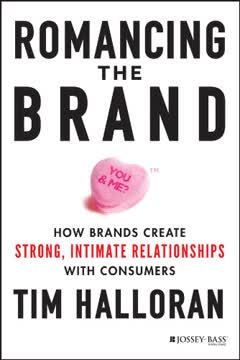Key Takeaways
1. Brand Relationships are Emotional, Not Just Transactional
If marketers were going to succeed, we would have to go beyond thinking about consumers as “target markets” that we needed to make aware of our brand and convince to purchase it.
Emotional bonds. Consumers don't just interact with brands; they form genuine relationships, often deeply emotional, mirroring human connections. This profound insight emerged from observing a woman describe Diet Coke as her "boyfriend," highlighting feelings of commitment, intimacy, and dependability towards a product. Marketers must recognize that these emotional bonds drive loyalty far beyond mere functional benefits.
Beyond attributes. Traditional marketing focused on product attributes and functional benefits, treating consumers as rational decision-makers. However, the most successful brands, like Harley-Davidson or Apple, cultivate deep emotional connections that transcend utilitarian value. This shift in perspective is crucial for engaging consumers in long-term, reciprocal relationships built on trust and shared values.
New paradigm. The future of marketing lies in fostering powerful, passionate, and genuine relationships between brands and consumers, akin to a romance. This paradigm shift, supported by academic research on brand personality and brand-consumer relationships, offers a path to revive the integrity of the marketing profession and rebuild consumer trust in an increasingly cynical world.
2. Know Your Brand's Unique Identity and "One Thing"
For you to be successful, you must be able to understand what is special about your brand.
Self-knowledge first. Just as in human relationships, a brand must first understand itself – its unique qualities, strengths, and what it brings to the table. This involves defining compelling product attributes and translating them into meaningful functional benefits that differentiate the brand from competitors. For example, smartwater's vapor distillation process and added electrolytes provided unique attributes that led to benefits like purity and good taste.
Own one idea. To cut through market clutter, a brand must identify and consistently communicate one core idea, its "one thing." This requires discipline to forgo other potentially lucrative messages that might dilute the brand's signature quality.
- Forgo others: Volvo consistently preaches safety, even if its cars have other great qualities.
- Win something: Smartwater wasn't the first bottled water, but it "won" the position of being the first developed like water in nature.
- Look within: Budweiser leveraged its efficient distribution system to "win" the "fresh beer" claim with its "Born On" initiative.
Foundation for romance. This singular focus creates a strong foundation, allowing the brand to establish its initial reputation and pique consumer interest. Without a clear understanding of its own identity, a brand cannot effectively identify its ideal consumer or build a lasting emotional connection.
3. Understand Your Ideal Consumer's Deepest Aspirations
We needed to think about engaging consumers in a long-term relationship.
Beyond demographics. To truly connect, marketers must move beyond superficial demographic data to understand consumers' psychographics – their attitudes, beliefs, hobbies, and passions. The Dos Equis team, for instance, immersed themselves in bars to understand young men's fear of being boring, leading to the "Most Interesting Man in the World" campaign. This deep dive reveals the emotional and social needs driving consumer choices.
Identify influencers. Every brand has an "ideal consumer" or "influencer" who, when connected, feels the brand was made for them and inspires others. Powerade targeted high school athletic leaders, recognizing their ability to set trends among peers. These influencers become crucial brand evangelists, spreading the message through their trusted networks.
Laddering benefits. A holistic brand proposition builds from product attributes to functional, emotional, and social benefits, culminating in a distinct personality and core essence.
- Functional benefits: What the product does (e.g., smartwater provides efficient hydration).
- Emotional benefits: How the brand makes the consumer feel (e.g., smartwater makes one feel stylish and healthy).
- Social benefits (badge value): What the brand says about the user to others (e.g., Dos Equis makes one seem interesting).
- Personality: The human-like traits of the brand (e.g., smartwater is modern, confident, stylish).
This "laddering up" creates a complex, appealing identity that resonates deeply with the target consumer, fostering a sense of "this brand is for me."
4. Craft Memorable First Encounters and Consistent Experiences
The first few meetings between brand and consumer dictate whether the relationship has potential or whether it will remain in the mere acquaintance phase.
Make them special. Initial interactions are critical. Brands must make influencers feel chosen and valued. Powerade achieved this by sending personalized mailers to top high school athletes, signaling their importance and instantly boosting the brand's social currency among this key demographic. Similarly, smartwater seeded its product with fashion-forward women in exclusive settings, making them feel part of an "in" crowd.
Right context, consistent message. The environment and every touchpoint must align with the brand's DNA. Powerade was introduced in high school gyms, making it an essential piece of athletic equipment. Smartwater was ubiquitous in trendy salons and gyms, reinforcing its image as a stylish accessory. Inconsistent messaging, like Mello Yello's name contradicting its energy drink positioning, can doom a brand.
- Location matters: Nike avoids Walmart to protect its brand image.
- Everything communicates: Logos, packaging, colors, ads, promotions, and even pricing must reflect the core idea.
- Authenticity is key: Disney's "magic" and Ritz-Carlton's "unwavering commitment to service" are consistently delivered across all interactions.
Establish intimacy. For brands that are novel or challenge expectations, like Mamma Chia, a personal, educational introduction is vital. Founder Janie Hoffman personally sampled her unique chia beverage at Whole Foods, sharing her story and the product's soulful benefits. This intimate, genuine interaction helped overcome initial consumer skepticism and forged a deep connection.
5. Cultivate Mutual Advocacy Through Word-of-Mouth
Word-of-mouth marketing is like being in a relationship. You’re proving to your partner that you listen to them, you hear them, and respect their opinion.
Power of recommendation. A recommendation from a trusted source is far more effective than traditional advertising. Word-of-mouth marketing (WOMM) taps into existing social networks, allowing influencers to share positive brand experiences with friends and family. Stuart Sheldon, a WOMM expert, emphasizes that brands must actively join and start these conversations, demonstrating respect for consumer opinions.
Coca-Cola Zero's success. Coca-Cola Zero's "It's Possible" campaign exemplified effective WOMM by empowering its most ardent fans, the Coke Zero Connection (CZC), to co-create a marketing program.
- Fan involvement: CZC members designed experiential events and spread the word before the program even launched.
- High pass-along: The live events generated a pass-along rate fifteen times higher for the correct brand message than social media alone.
- Quality over quantity: Focusing on fewer consumers having a better brand experience leads to a higher pass-along factor and more accurate message dissemination.
Social media's role. While offline, face-to-face conversations account for 90% of brand-related WOM, social media is crucial for maintaining dialogue and personalizing communication. It allows brands to engage in ongoing, lighter interactions, complementing larger campaigns and tailoring messages to individual consumer relationship stages. However, it cannot replace the actual brand experience.
6. Deepen Connections by Making Consumers Feel Special
For a consumer to agree with that statement, he or she must feel very connected with the brand.
Sustaining the romance. Once a consumer is committed, brands must continue to nurture the relationship, making them feel important and valued. Chick-fil-A's exclusive, reservation-based launch of its Spicy Chicken Sandwich made e-club members feel special, generating immense buzz and loyalty. This approach prioritizes the quality of the experience over sheer volume, reinforcing the brand's commitment to its most loyal customers.
"Brand for me" feeling. The ultimate goal is for consumers to feel a brand was "created with me in mind," a powerful indicator of deep connection. Apple consistently achieves this, but even niche brands like Turner Classic Movies (TCM) rank highly. TCM's success stems from its "context and curation" approach, offering uncut, commercial-free classic films with insightful commentary, fostering a community of "Cultural Engagers" and "Relevance Seekers" who feel understood and catered to.
Measuring passion. Brands can quantify the strength of their relationships using a "Passion Index," which measures consumer sentiment across dimensions like consumption, connection, community, and social engagement.
- Identify strengths/weaknesses: Pinpoint areas where the brand excels or needs improvement in its relationship.
- Track progress: Monitor how the relationship evolves over time, acting as an early warning system for potential issues.
- Benchmark against others: Compare passion levels with competitors and aspirational brands to understand relative performance.
This continuous measurement and focus on the consumer's experience are vital for achieving and maintaining a solid romance.
7. Keep Love Alive Through Continuous Innovation and Storytelling
Without ongoing streams of news, the relationship inevitably starts to plateau.
Evolving the narrative. Even century-old brands like Coca-Cola must continuously innovate and tell new stories to keep their relationships fresh. Coca-Cola's "Liquid and Linked" strategy focuses on "dynamic storytelling," creating contagious ideas that provoke conversations and a disproportionate share of popular culture. The "Happiness Machine" campaign, for instance, captured genuine consumer reactions to unexpected acts of kindness, reminding viewers of Coke's core essence: sharing happiness.
Innovation as lifeblood. Innovation isn't just about new products; it's about new ways to communicate, new packaging, new associations, and new experiences. These initiatives, even if experimental, are crucial for preventing stagnation and breathing new life into mature relationships.
- Unexpectedness: The Happiness Machine's surprise element made it memorable.
- Authenticity: The campaign's genuine portrayal of happiness resonated deeply.
- Strategic social media: Online videos built on an established message, allowing consumers to share authentic moments.
Escaping ruts. Innovation can rescue brands from relationship ruts. Domino's Pizza famously changed its recipe and transparently admitted past product flaws, leading to a dramatic turnaround. P&G's Bounty paper towels introduced decorative prints, transforming a commodity into a "small gift" for moms. These "smart risks" demonstrate a commitment to improving the consumer experience and revitalizing the brand's appeal.
8. Navigate Crises with Transparency and a Focus on Rebuilding Trust
How the brand responds to the crisis and how the crisis is resolved will affect the future of the brand-consumer relationship.
Inconsistent past. The Atlanta Falcons faced a severe brand crisis following Michael Vick's dogfighting scandal and Coach Bobby Petrino's abrupt departure. Their brand, historically built on inconsistency and losing seasons, was at an all-time low, with fans feeling betrayed. This highlighted the danger of building a brand on shallow foundations or individual personalities rather than core values.
Rebuilding values. Owner Arthur Blank tasked Jim Smith's marketing team with rebuilding the Falcons brand by defining six core values: Unity, Power, Youth, Integrity, Community, and Modern South. These values formed the basis of a new brand mantra: "The Atlanta Falcons are Authentic, Magnetic, Elevating." This shift aimed to create a team identity that transcended on-field performance and resonated with the diverse Atlanta community.
"Rise Up" movement. The "Rise Up" campaign, fronted by Samuel L. Jackson, became an optimistic and inspirational call to action for the city and community. It focused on the team's resurgence from adversity, emphasizing collective spirit rather than individual players. This consistent message, delivered across all touchpoints—from advertising to in-stadium experience and community initiatives—began to shift fan perceptions, demonstrating that a brand can rebuild trust and strengthen relationships even after significant setbacks.
9. Know When to Adapt, Reposition, or End a Brand Relationship
Brands can start over. They can break up with one consumer group and start a new relationship with a different one.
Strategic repositioning. When a brand-consumer relationship deteriorates, marketers face a critical choice: rescue the existing relationship, pivot to a new consumer group, or discontinue the brand. Sprite, facing stagnation and a misaligned target (moms), made the bold decision to "break up" with its Home Category Managers and focus on young urban males. This involved aligning its "crisp, clean, clear, cool, caffeine-free" attributes with the emerging hip-hop culture, culminating in the "Obey Your Thirst" campaign.
Calculated risks and deep care. Sprite's success stemmed from a calculated risk, a bold shift in messaging, and a genuine commitment to its new consumer base.
- "Image Is Nothing. Thirst Is Everything. Obey Your Thirst." This tagline resonated with teens who valued authenticity and self-expression.
- NBA association: Partnering with the NBA provided a relevant platform that aligned with the hip-hop aesthetic.
- "Free Sprite" promotion: A no-grand-prize promotion reinforced the brand's honesty and drove consumption frequency.
Lessons from failure. The New Coke saga, often cited as a marketing blunder, offers crucial lessons on when to end a relationship. Despite initial sales, the backlash and consumer anger over the original formula's removal created an insurmountable barrier. While New Coke (later Coke II) was tactically used to combat Pepsi, the company ultimately decided to discontinue it, recognizing that maintaining the relationship was not in the broader business's best interest. This highlights the importance of knowing when to cut losses and reallocate resources to more promising opportunities.
Last updated:
Review Summary
Romancing the Brand receives mixed reviews, with an average rating of 3.76 out of 5. Readers appreciate the book's insights on creating emotional connections between brands and consumers, and its use of real-world examples and case studies. Many find it informative and inspiring for marketers and business owners. However, some criticize the translation quality and repetitiveness. The book's exploration of marketing strategies, particularly from Coca-Cola, is praised. Overall, it's considered a valuable resource for understanding branding and marketing relationships, despite a few shortcomings.
Similar Books
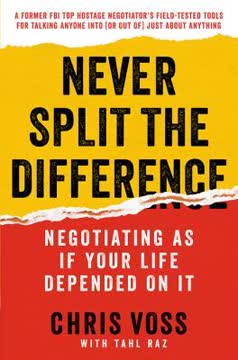
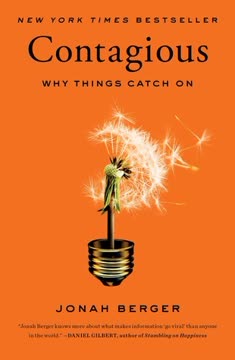
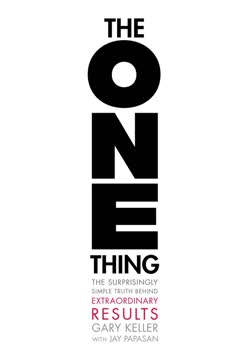
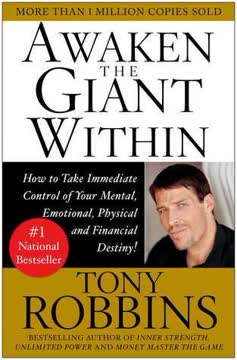
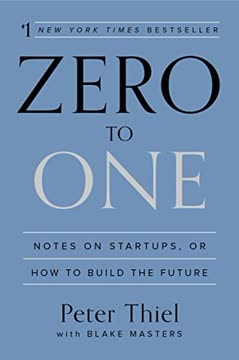
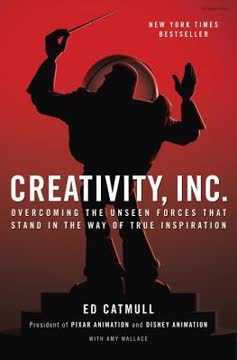
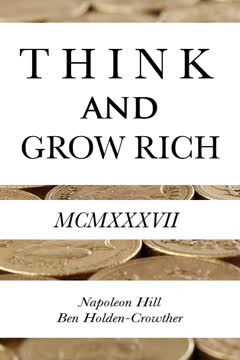
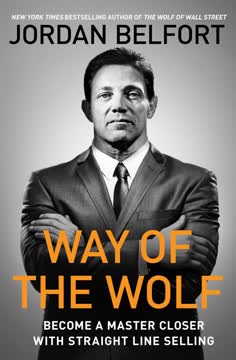
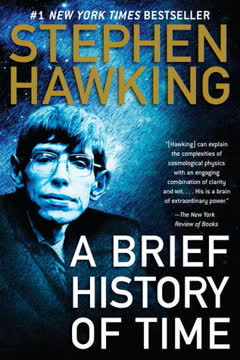
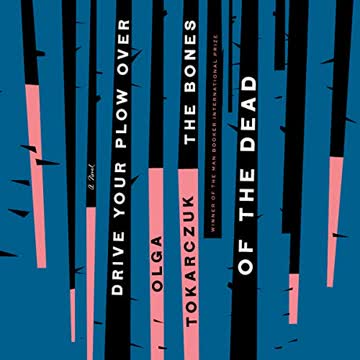
Download PDF
Download EPUB
.epub digital book format is ideal for reading ebooks on phones, tablets, and e-readers.
